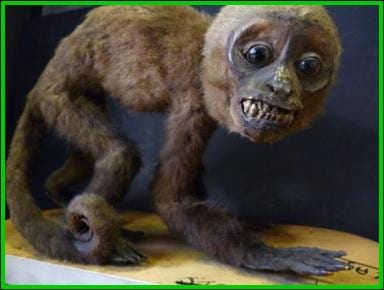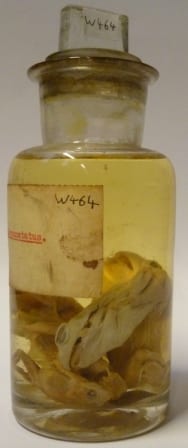Specimen of the Week: Week 116
By Emma-Louise Nicholls, on 30 December 2013
 Only two days left to conjure up all manner of good intentions and promises to yourself that you’ll be determined to keep until the first slip and then give up until the following New Year. Last year my New Year’s resolution was to start at one end of my (many) bookshelves and read my way through my ‘library’. I did pretty well, until I got to a boring book and then tailed off. In retrospect, I should have thrown the book out and kept going. This year I think I’ll make life a little easier on myself and make the resolution to watch more DVDs. With 48 hours left until the resolutions need to be made, here is a suitably New Year’s Eve-y specimen to get you in the mood. This week’s Specimen of the Week is…
Only two days left to conjure up all manner of good intentions and promises to yourself that you’ll be determined to keep until the first slip and then give up until the following New Year. Last year my New Year’s resolution was to start at one end of my (many) bookshelves and read my way through my ‘library’. I did pretty well, until I got to a boring book and then tailed off. In retrospect, I should have thrown the book out and kept going. This year I think I’ll make life a little easier on myself and make the resolution to watch more DVDs. With 48 hours left until the resolutions need to be made, here is a suitably New Year’s Eve-y specimen to get you in the mood. This week’s Specimen of the Week is…

The preserved western spotted frog(s)
(Heleioporus albopunctatus)
at the Grant Museum of Zoology.
LDUCZ-W464.
**The western spotted frog**
1) What does the western spotted frog have to do with the New Year? Well. The scientific name for the New Guinea quoll is Dasyurus albopunctatus. The link there is obvious, the common name has the word ‘new’ in it. We don’t happen to have a Dasyurus albopunctatus but we do have an Heleioporus albopunctatus, a western spotted frog, which is just as good (if even more tenuously linked to the New Year.) The spotted frog has a lovely chocolatey brown body, with a sprinkling of white or creamy spots. Not just freckles, big round spots. It can grow up to 10 cm in total body length and the males have a large sharp spine on the first finger of each hand.
2) The western spotted frog lives in Australia. Not surprisingly in the west of Australia. Adult individuals are normally found at night time on the surface of the water throughout the summer and into the early Autumn. It prefers the margins of temporary water bodies or swamps in semi-arid areas. To keep cool and moist, the western spotted frog will burrow into the mud of the bank, or dig down under stones on the sandy river bed.

This tadpole is from a giant burrowing frog, which is
the same genus as the western spotted frog (copyright
free images of the western spotted frog are rare, it
seems). (Image taken by Tnarg 12345, image obtained
from www.commons.wikimedia.org)
3) The male will dig a burrow somewhere strategic, that will flood during the rainy season. Once his attractive calls have enticed a female to procreate, she will lay a frothy foam containing between 250 and 700 eggs in the male’s pre-dug burrow. Once the tadpoles hatch between ten days and four weeks later, they rely on the rising water levels to flood the nest and lead them a larger body of water.
4) The tadpole of the western spotted frog is pale to dark brown just like its parents, but instead of spots it has a series of pale lines running along its flanks. Once it has been washed from the shallow burrow into the ‘proper’ body of water, it will remain near the substrate, sheltering amongst the vegetation. The tadpole will start to grow legs and lose its tail, passing out as a fully fledged frog after between two and three months. Not always content with its own kind, the western spotted frog has been observed interbreeding with the moaning frog (pictured below), in areas where the two cohabit.

The moaning frog, the ‘mistress’ of the
western spotted frog world. (Image taken by
Dean Bradshaw, image obtained from
www.commons.wikimedia.org.)
5) The species name (albopunctatus) for the western spotted frog describes its colouration. Albo means ‘white’ (like albino) and punctatus means ‘spot’. The translation therefore is ‘white-spotted’. Which as you can see from the link above, it is. This translation also explains the species name of the New Guinea quoll (our link to the New Year), given it’s beautiful fur coat.
Emma-Louise Nicholls is the Curatorial Assistant at the Grant Museum of Zoology
 Close
Close

